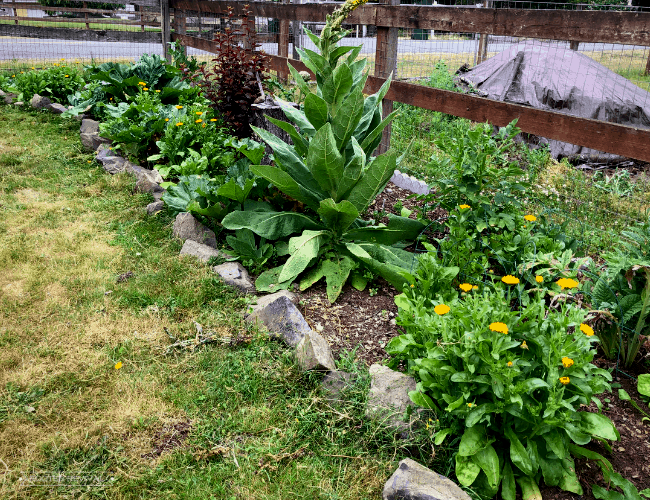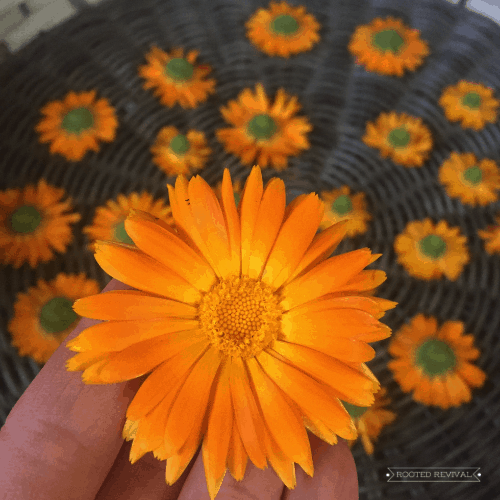Calendula is one of my absolute faves in my garden! It is gorgeous, aromatic, and also has loads of benefits, such as promoting healing.
But you definitely don’t want to plant the wrong thing alongside it!
I’ve been growing calendula for years, and in that time I’ve understood that the 5 worst companion plants for calendula are:
- Beans
- Cabbage
- Shady trees
- Fruit
- Broccoli
In this post, I’ll go through each of these in turn, and highlight:
- The reasons why each doesn’t work with Calendula
- Is calendula a good companion plant (in general)?
- Some great alternative companion plants to grow alongside calendula

5 Worst Companion Plants for Calendula
Here are the five worst companion plants that you shouldn’t plant with calendula:
1. Beans
Many home gardeners utilize companion planting to keep insects away from other plants. This is definitely the case with beans and calendula.
Here’s the harsh truth – both plants will suffer due to being near each other. When you grow calendula with beans, significant amounts of corn earworm occur on the beans. Additionally, other pests will favor the calendula.
That’s not all. The roots of calendula exude substances that usually kill nematodes. Nematodes are biological substances that actually repel a range of pests.
We welcome nematodes in our gardens, and don’t want to kill them!
Amazingly, calendula roots also stunt the growth of beans, leading to less yield.
2. Cabbage
If cabbage is your thing, then (weirdly enough) planting calendula next to them will be good for the cabbage, but bad for calendula. If you want both to thrive, then don’t put them anywhere near each other!
Why is that?
A study found that intercropping calendula and cabbage resulted in a lower number of flea beetles, diamondback moths, cabbage moths, and cabbage aphids on the cabbages.
Yet, this means pests will infest the gorgeous calendula blossoms, completely destroying them.
Great for your cabbage, but rubbish for the calendula.
3. Shady Trees
For your calendula to blossom beautifully, the plant needs full sun to partial shade. Full shade just doesn’t quite work. (And naturally, you can’t grow pot marigolds indoors!)
The amount of shade is a primary consideration when choosing the correct spot in your garden for the calendula flower. While these flowers might look great as a floral bed under trees, they simply won’t bloom.
Additionally, woody trees can attract numerous pests that will easily kill your pot marigolds. Eek!

4. Fruit
Most fruits are susceptible to various pests, especially once they ripen. That’s why planting any fruit with calendula is a sure way of sacrificing your precious pot marigolds.
Some pests that favor calendulas instead of fruit include the following:
- Spider mites
- Aphids
- Whiteflies
- Thrips
5. Broccoli
Broccoli seems to be one of the very worst things to grow alongside calendula.
Aphids love to feed on broccoli. They swarm once they get a whiff of the vegetable.
However, they seem to like calendula even more. So, they ravage the pot marigold, leaving the broccoli safe. Yikes!
Is Calendula a Good Companion Plant?
Don’t let me put you off though! The above plants are definitely exceptions to the rule.
In general, calendula is a perfect companion plant.
And you can definitely still have a flower and fruit garden while keeping your calendula. Just grow these crops in separate areas.
In fact, calendula attracts many beneficial organisms, such as ladybugs, bees, and butterflies. These will enhance your garden’s beauty and might even help in pollination.
Pot marigolds can also enhance the quality of your soil. Studies show that calendula is effective in remedying soil that has been contaminated with cadmium!
You should note that calendula is allelopathic in numerous ways. This means that it either has a positive or negative effect on the growth of other plants around it.
For example, (random one) – it has been found to improve the growth of hoary cress.
So, if you already have a hoary cress infestation in your garden, planting calendula would only worsen the problem.
For most plants, calendula is an ideal flower to further the growth of other crops and keep pests away from them.
If your priority is to get the most out of your calendula and keep it thriving, you should plant it with plants that don’t attract aphids, such as strong-smelling herbs and root plants like garlic and ginger.
Best Plants to Grow With Calendula
Here are some of the best crops that won’t damage your gorgeous pot marigolds:
| Plant | How it benefits Calendula |
| Lavender | Lavender and pot marigolds look exquisite near each other. Additionally, lavender doesn’t attract many pests due to its strong scent. This purple flower is also ideal for repelling slugs, which can feed on and damage calendula. |
| Onion | Another plant that has a potent smell is onion. This hardy root rarely attracts pests. In contrast, growing it with calendula can protect the herb.That’s because onions are useful in deterring slugs and grasshoppers, which frequent pot marigolds. |
| Roses | Roses are undoubtedly the most mesmerizing flowers you can add to your garden. Luckily, calendula and roses can assist each other, as they both attract beneficial insects. |
| Mint | Generally, herbs are safe to grow with calendula. They rarely attract pests. Instead, pungent herbs can help calendula repel insects.In particular, mint is perfect as a companion plant to calendula, as both have similar growth requirements. |
Frequently Asked Questions
What bugs does calendula attract?
Calendula attracts its fair share of bugs. Yet, most of them are harmless, while some are only harmful to calendula. The pests include:
- Flea beetles
- Cucumber beetles
- Spider mites
- Slugs
- Thistle butterfly caterpillars
How long does calendula bloom?
Calendula is an annual herb, blooming once a year. Its blooming time depends on the sowing. A spring sowing will bloom from June to September, while an autumn sowing blooms from May to July.
Conclusion
OK, so in a nutshell…
Typically, calendula is an excellent companion plant. Growing pot marigolds with other shrubs or crops ensures pests will stay away from them. Instead, the insects will favor calendula.
This will lead to the calendula dying. Naturally, if you want to keep your pot marigolds blooming beautifully, there are certain plants not to plant with calendula.
Any crop that attracts pests, such as beans, broccoli, cabbage, and fruit, must be planted away from calendula. You should also keep calendula in a sunny area, away from large, shady trees.


Debbie
Monday 10th of June 2024
How far away from beans should calendula be planted?
Rooted Revival
Wednesday 3rd of July 2024
@Debbie, Plant calendula about 12-18 inches away from beans to ensure they both have enough space to grow without competing for nutrients and sunlight.